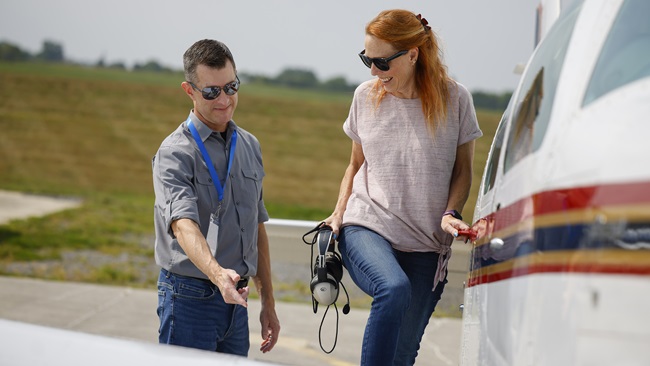Career Pilot: Beyond the airlines
Opportunities abound in business aviation

The National Business Aviation Association (NBAA) is pointing to the airlines as contributors to the pilot shortfall in the business aviation world: “Business aviation is finding it increasingly difficult to attract and retain talent, in part because the airlines are offering what is perceived to be a better deal, but also in part because of an overall decline in the number of people choosing aviation careers.”
Bob Seidel is the CEO of air charter company Alerion Aviation. He told Forbes magazine that private aviation is also at risk for a lack of pilots: “We both draw from the same sources. And over the next 20 years, commercial passengers are going to double. Private travel is growing probably at a faster rate than commercial travel is growing. Compounding this issue is that airlines have been forced to seek people with higher levels of experience.”
The pilot shortage is felt heavily at the regional airline level and among business jet operators. Pilots are dispersing from the ranks of business jets to pursue more lucrative aviation jobs that include a more predictable schedule, signing bonuses, and long-term stability. In a recent Boeing forecast, the combined demand in business aviation and helicopter sectors amounted to at least 155,000 pilots and 132,000 maintenance technicians over the next 20 years.
The result may be beneficial to anyone chasing a corporate or air taxi flying career. Business jet owners and operators will continue to feel pressure to increase benefits, pay, and quality of life.
As an example, GrandView Aviation, a Maryland-based charter operator, is offering a signing bonus of $5,000 to $10,000 to be paid upon completion of training, depending on pilot experience.
Flexjet recently announced a significant increase for its “Red Label” pilots who fly for the company’s premier charter operation. A fifth-year Challenger 350 pilot may earn as much as $176,000 a year, and a third-year aircraft commander in a Gulfstream G650 might earn $205,000 annually.
The 2018 NBAA Compensation Survey claims that a senior captain in the business is earning about $164,000. That is an increase of 12 percent from the previous year’s number.
Although business aviation does acknowledge the need for a ready reserve of flying talent, unique challenges make it difficult to get there. The first of these is image.
Despite the dream of flying a gleaming Global Express or Gulfstream G–IV, the path to that big iron could be through a King Air, a Piper Navajo, or a Beechcraft Baron. With the airlines, chances are the first airplane a newly minted airline transport pilot will fly would be an ERJ, CRJ, or that spiffy new Airbus 220. There is also the security of a decent-size company and a schedule that is fairly predictable. The image of demanding clients creating havoc with a pilot’s personal life and schedule is one that persists for anyone looking to fly corporate or charter.
Another obstacle is the job hunt itself. Business aviation thrives on networking. Relationship building takes time. Applying to multiple corporate operators by flooding them with résumés can be a painstaking process when there might be only one or two flying positions open, if any, with an individual employer. With one application to a regional airline, there is consideration for hundreds of openings.
Airlines have made a concerted outreach to aviation colleges, universities, and academies. Has business aviation made that effort? Granted, some operators do provide internships but there is no grand-scale program offered by business aviation employers.
Despite the downsides—as thousands flying in business aviation have done—they can be overcome and managed. For anyone who bristles at the notion of the monotony of an airline lifestyle, shepherding some big shots to a business outing in Aspen in a Falcon 2000 is worth some initial grief early on.
So, for those who aim for the sky as a means to support one’s lifestyle, this all just proves there’s more than one way to get there.


